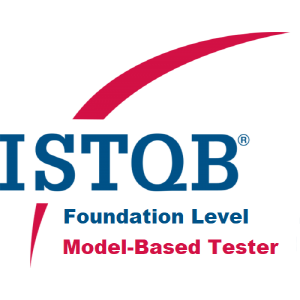
ISTQB FOUNDATION – MODEL-BASED TESTER certificate is an innovative training for test approach to improve effectivity and efficiency of the test process.
A model-based tester on a project uses models to drive test analysis and design, and keeps advantage of the models for other testing activities such as test implementation and reporting.
Business Objectives
Collaborate in a model-based testing team using standard terminology and established MBT concepts, processes and techniques.
Apply and integrate model-based testing in a test process.
Effectively create and maintain MBT models using established techniques and best practices of model-based testing.
Select, create and maintain test artifacts from MBT models considering risk and value of the features tested.
Support the organization to improve its quality assurance process to be more constructive and efficient.
In general, an ISTQB® Model-Based Tester has acquired the necessary skills to successfully contribute to MBT projects in a given context.
Prerequisites
Participants must have a ISTQB Foundation Certified Tester certification to sit the exam
Contents
1 Introduction to Model-Based Testing
1.1 Objectives and Motivations for MBT
1.1.1 Main Motivations for MBT
1.1.2 Misleading Expectations and Pitfalls of MBT
1.2 MBT Activities and Artifacts in the Fundamental Test Process
1.2.1 MBT Specific Activities
1.2.2 Essential MBT Artifacts (Inputs and Outputs)
1.3 Integrating MBT into the Software Development Lifecycles
1.3.1 MBT in Sequential and Iterative Software Development Lifecycles
1.3.2 Supporting Requirements Engineering
2 MBT Modeling
2.1 MBT Modeling
2.1.1 MBT Modeling Activities
2.1.2 Subject and Focus of MBT Models
2.1.3 MBT Models Depend on Test Objectives
2.2 Languages for MBT Models
2.2.1 Main Categories of Modeling Languages for MBT
2.2.2 Language Categories Relevant for Different Systems and Project Objectives
2.3 Good Practices for MBT Modeling Activities
2.3.1 Quality Characteristics for MBT Models
2.3.2 Typical Mistakes and Pitfalls in MBT Model Design
2.3.3 Linking Requirements and Process Related Information to the MBT Model
2.3.4 Modeling Guidelines for MBT
2.3.5 Reuse of Existing System Design or Requirements Models
2.3.6 Tool Support for Modeling Activities
2.3.7 Iterative Model Development, Review and Validation
3 Selection Criteria for Test Case Generation
3.1 Classification of MBT Test Selection Criteria
3.1.1 Test Selection Criteria
3.1.2 Test Case Selection in Practice
3.1.3 Examples of Test Selection Criteria
3.1.4 Relation to Foundation Level Test Design Techniques
3.2 Applying Test Selection Criteria
3.2.1 Degree of Automation in Test Generation
3.2.2 Pros and Cons of Specific Test Selection Criteria
3.2.3 Good Practices of MBT Test Selection
4 MBT Test Implementation and Execution
4.1 Specifics of MBT Test Implementation and Execution
4.1.1 Abstract and Concrete Test Cases in the MBT Context
4.1.2 Different Kinds of Test Execution
4.1.3 The Impact of Changes on the MBT Artifacts
4.2 Activities of Test Adaptation in MBT
5 Evaluating and Deploying an MBT Approach
5.1 Evaluate an MBT Deployment
5.1.1 ROI Factors for MBT Introduction
5.1.2 Organizational Objectives and their Relationship to the Characteristics of the MBT Approach
5.1.3 Metrics and Key Performance Indicators
5.2 Manage and Monitor the Deployment of an MBT Approach
5.2.1 Good Practices when Deploying MBT
5.2.2 Cost Factors of MBT
5.2.3 Integration of the MBT Tool
Exam Details
The Foundation Level Model-Based Tester exam is comprised of 40 multiple-choice questions, with a pass mark grade of 65% to be completed within 60 minutes. Participants that take the exam not in their spoken language, will receive additional 25% time, and will have 15 minutes more, or a total of 75 min.
